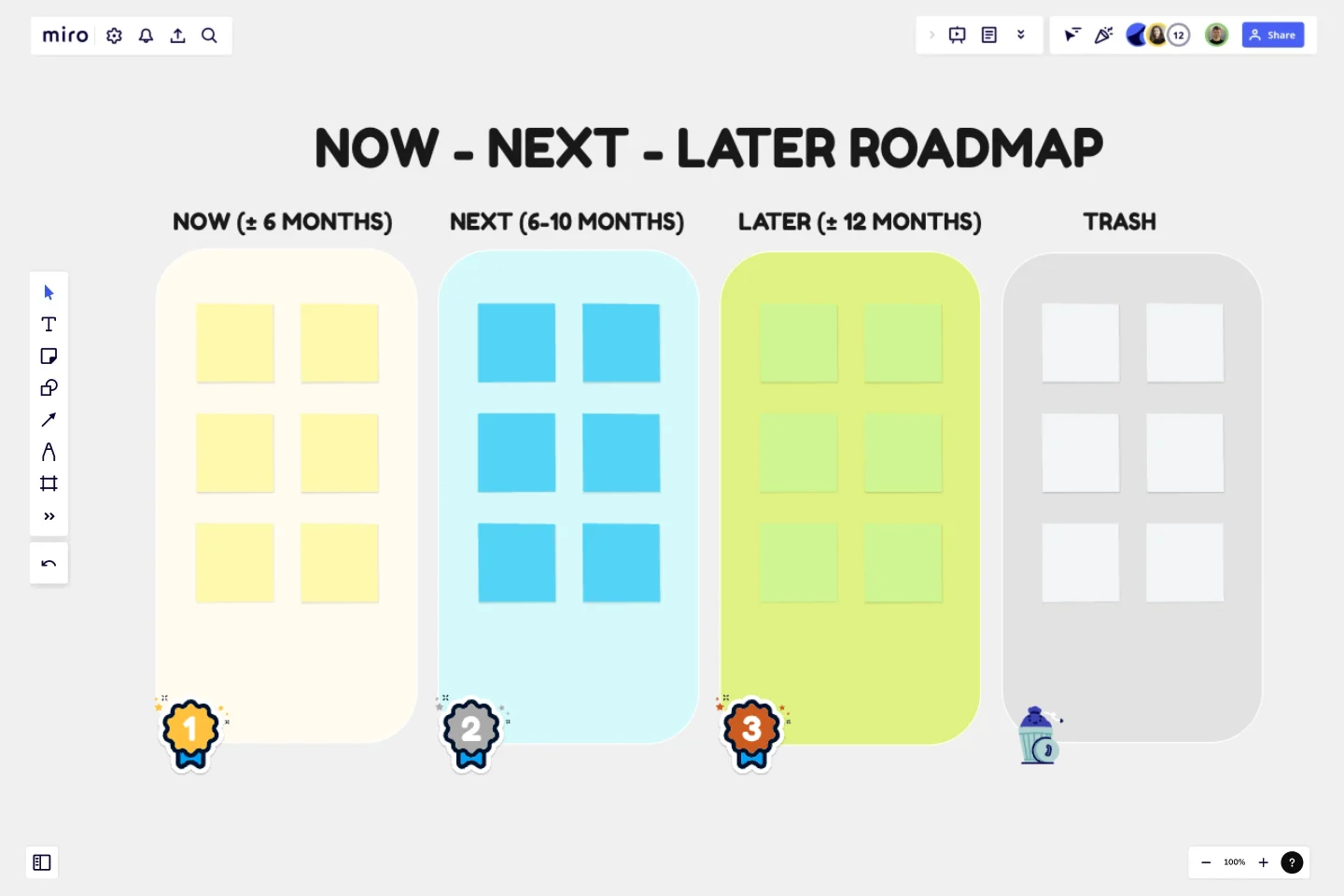Product Roadmap by Petra Ivanigova
This template can be used by teams to manage a product's development timeline.
It's divided into three time-based categories:
Now for immediate tasks to be completed within 6 month
Next for medium-term plans spanning 6 - 10 months
Later for long-term goals anticipated to be addressed after 12 months
The roadmap helps teams prioritize their work and ensures a clear focus on current objectives while keeping future plans in sight.
This template was created by Petra Ivanigova.
Get started with this template right now.
A3 Report Template
Works best for:
Product, Strategy and Planning
The A3 report template is a carefully designed tool that provides teams with a structured and visual methodology to tackle challenges. It divides the problem-solving process into background, current context, data analysis, and implementation plans, ensuring a comprehensive approach to each issue. One of the major advantages of this template is its "Data Analysis" section, which enables teams to delve deeply into concrete insights and trends. This data-driven approach ensures that all recommendations and actions are based on real, tangible evidence rather than just intuition, leading to more effective and strategic decision-making.
Improve Any Product - Product Management
Works best for:
Product Management, Planning
Improve Any Product - Product Management template provides a structured framework for enhancing product quality and performance. By analyzing customer feedback, identifying improvement areas, and implementing iterative enhancements, this template empowers product managers to optimize product features and functionalities. With sections for prioritizing enhancements and tracking progress, it facilitates continuous improvement efforts, ensuring that products meet evolving customer needs and market demands.
Basic Product Roadmap Template
Works best for:
Produc Roadmap
The Basic Product Roadmap template visually outlines your product's strategic direction from start to finish. It helps you plan and communicate your product’s goals, features, and timelines effectively. Ideal for product managers, it ensures all team members stay aligned on product vision and strategy, fostering better coordination and efficiency throughout the development cycle.
Product tone of voice
Works best for:
Product Management, Planning
The Tone of Voice Workshop template helps product teams define and align on brand tone and messaging. By facilitating collaborative workshops, exploring brand personality traits, and defining tone guidelines, this template ensures consistent and impactful communication. With sections for identifying target audience personas, articulating brand values, and crafting messaging principles, it enables teams to create authentic and compelling brand voices. This template serves as a foundation for building strong brand identities and resonating with customers across all touchpoints.
AI Product Canvas
Works best for:
Product Management, Planning
The AI Product Canvas template facilitates the development of AI-powered products with a comprehensive framework. By defining AI capabilities, data requirements, and ethical considerations, this template guides teams through the AI product development process. With sections for identifying use cases, defining algorithms, and assessing model performance, it ensures that AI solutions meet user needs and ethical standards. This template serves as a strategic guide for developing innovative AI products that deliver value and drive business success.
Midnight Sailboat Retrospective
Works best for:
Retrospectives, Meetings, Agile Methodology
The Midnight Sailboat Retrospective template offers a metaphorical journey through past experiences and future aspirations, likening the retrospective process to a midnight sailboat voyage. It provides elements for reflecting on challenges faced, lessons learned, and goals for the future. This template enables teams to navigate uncertainties, chart a course for success, and foster a culture of resilience. By promoting reflection and metaphorical thinking, the Midnight Sailboat Retrospective empowers teams to overcome obstacles, embrace change, and sail towards their goals effectively.
